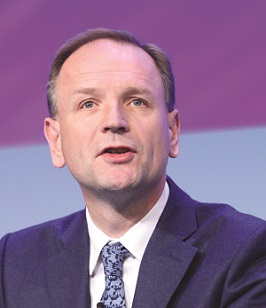Questions, questions
As far as the NHS in England is concerned, last month’s Budget feels like winding the clock back to the 1980s and early 1990s. During those years, often in the face of an impending difficult winter, non-recurrent funding was found – money that often had to be spent within the remaining three or four months of the year.
Of course, an extra £2.8bn in revenue and £3.5bn of capital over the next few years is to be welcomed, but questions remain about the impact it will make.
Chancellor Philip Hammond made £335m immediately available to the NHS to address winter pressures. In 2018/19, the NHS will receive an extra £1.6bn in resource funding, taking the overall increase in revenue to £3.75bn next year. A further £900m will be allocated in 2019/20 to address future pressures.
The chancellor does not directly allocate funding to health services in the devolved nations – that is a decision for their administrations. But he said that as a consequence of the decisions made in his Budget, the administrations’ overall budgets would increase. The Scottish government would receive an extra £2bn, the Welsh government £1.2bn and Northern Ireland £650m.
It appears the funding for the NHS in England is non-recurrent. Compared with figures set out in the Spring Budget, overall health revenue funding in England, including NHS funding, is now planned to be £1.6bn higher in 2018/19 and about £1bn higher in 2019/20.
As in the last spending review, the promise of additional funding is for NHS services, not the Department of Health as a whole.
In his Budget speech to the House of Commons, Mr Hammond recognised the pressure faced by the NHS. ‘I am therefore exceptionally, and outside the spending review process, making an additional commitment of resource funding of £2.8bn to the NHS in England,’ he said.
Immediately after the Budget statement, there was some debate about the word ‘exceptionally’, but it seems the chancellor was stressing the one-off nature of allocating additional funding outside the spending review process.
Unusually, in the run-up to the Budget, NHS England had joined pressure groups and think-tanks in calling on the chancellor to increase health funding. A figure of £4bn was widely used – a joint Budget submission by the Health Foundation, King’s Fund and Nuffield Trust said at least a further £4bn was needed in 2018/19 to meet demand and avoid longer waiting times, rationing and a deterioration in care quality.
Following the Budget statement, NHS England chairman Sir Malcolm Grant said the extra money would go only ‘some way towards filling the accepted funding gap’. And he said the country could ‘no longer avoid the difficult debate’ about what the health service could deliver for patients.
This echoed Simon Stevens’ (pictured) speech to NHS Providers’ annual conference in November. The NHS England chief executive said: ‘The budget for the NHS next year is well short of what is currently needed to look after our patients and their families at their time of greatest need. After seven years of understandable but unprecedented constraint, on the current budget outlook the NHS can no longer do everything that is being asked of it.’
Health Foundation director of research and economics Anita Charlesworth told a British Medical Journal discussion on the Budget that the additional funding for 2018/19 would help relieve the emergency pressures, but it would not be enough to also tackle the waiting backlog.
‘The fear is that the debate will not be addressed. And the service that really suffers is one that is much less visible politically but really vital – mental health, community nursing.’
It could be argued that this process of taking tough decisions is already under way, with some commissioners restricting access to certain procedures, including IVF.
For the past few years, NHS funding has been notified well in advance to promote good planning and best value for money. But many in the NHS will feel that it will be difficult to spend the additional £335m for this year well.
‘It’s hard to see how you can spend that money in a value-for-money way,’ said King’s Fund chief analyst Siva Anandaciva. ‘You can buy extra capacity for operations from the independent sector; you can get more staff on temporary contracts, but all of this would have been more effective if the money had been given earlier in the financial year.’
The additional funds are tied to improvements in efficiency and productivity – Budget papers said additional funding should allow the NHS to meet the four-hour A&E target next year, make inroads into waiting lists and improve performance against waiting times.
Social care was not mentioned in the chancellor’s speech – perhaps because it received an additional £2bn over three years in the Spring Budget – but the sector remains challenged.
Ms Charlesworth suggested the NHS could usefully use some of its additional £335m to purchase extra social care packages over the winter. This could reduce delayed discharges and free up beds.
According to the latest NHS performance figures, delayed discharges due to issues in the health service are down, but the number due to lack of available social care is up.
The Budget was expected to allocate an additional £10bn in capital funding to the NHS and, though this is the headline figure mentioned in the statement, Exchequer funding will amount to £3.5bn over the next five years. This is on top of the £425m announced in the Spring Budget. The chancellor said this is the government’s share of the £10bn investment recommended by the Naylor review of NHS property and estates earlier this year.
The £3.5bn of new capital funding will be divided into three lots:
- £2.6bn for sustainability and transformation partnerships (STPs) to transform and integrate care
- £700m to support turnaround at trusts facing the biggest performance challenges and to tackle urgent maintenance issues
- £200m to support efficiency programmes, such as schemes to reduce trust energy costs or to introduce technology that will allow clinicians to spend more time with patients.
Alongside the Budget, the government announced the provisional allocation to 12 STP schemes, using up to 10% of the £2.6bn available.
But with around £4bn coming from the Treasury, the NHS will have to find another £6bn to meet the capital needs estimated in the Naylor report. The Treasury said its capital funding allocation should allow the NHS to increase the proceeds of sales of surplus estate to at least £3.3bn. The Naylor report estimated the NHS could release £2.7bn, so the service has been set a stretching target.
There is also the question of where the surplus land and estates sit. A large proportion is in London, but will organisations in the capital hold on to the receipts or will some go to the regions?
A clue could lie in the Memorandum of understanding on the London health devolution, released in the same week as the Budget. This recognised the need for equitable distribution of receipts from sales, but the principle of equity also meant that the higher cost of development in London should be recognised. Health and social care systems needed incentives to release surplus land, it noted. In principle, NHS trusts and foundation trusts could retain capital receipts.
Could the balance of the £10bn of capital come from private finance? The Budget documents said this source of funding could be used where it provides good value for money.
New pay deal?
Pay was the third big issue addressed by Mr Hammond. While the government had said it would lift the 1% cap on pay increases in the NHS, Mr Hammond did not set a figure – preferring not to prejudge the work of the pay review bodies.
In a further development, he revealed that the Department and NHS unions had initiated discussions on a new deal for Agenda for Change staff. He pledged to fund any deal on condition that it improved productivity and was justified on the grounds of recruitment and retention.
‘I want to assure NHS staff and patients, that if the health secretary’s talks bear fruit, I will protect patient services by providing additional funding for such a settlement,’ he said.
But can the pay of nurses, physiotherapists or finance staff – all on Agenda for Change pay scales – be linked to NHS productivity?
First of all, the government and the unions would have to agree a definition of how productivity could be measured – could it be calculated on an individual, team, organisation or national level, for example? And with so many factors influencing productivity that are out of the control of individuals or even teams – for example, staff shortages – would it be fair?
Mr Anandaciva said it’s more likely full funding from the Treasury of any pay rise will be linked to reform of terms and conditions that emerges from the pay talks.
The Royal College of Nursing was pleased the government had listened to union campaigns to lift the 1% ceiling. But chief executive Janet Davies warned of the dangers of linking a pay rise to nurses working harder.
‘The NHS has been running on the goodwill of its staff for too long, and with more talk of reform and productivity, [the chancellor] runs the risk of insulting nurses who regularly stay at work unpaid after 12-hour shifts. Their goodwill will not last indefinitely.’
The focus on Agenda for Change means medical workforce pay was not addressed in the Budget, leaving further questions. Does this mean doctors and dentists will not receive a pay rise above 1%? If they do, will it be linked to further contract reform?
And who will pay for medics’ pay rise? The chancellor has only given an assurance that AFC pay rises will be covered, subject to his caveats on productivity, recruitment and retention. Long-term discussions over a new consultant contract have yet to bear fruit.
The Budget brought some relief to the health service in England – new, though apparently non-recurrent, revenue has been allocated; some capital funding has been found; and there is a promise to fully fund AFC pay rises. But it all comes with further questions and strings attached and no-one is convinced there is enough to cure the service’s current ills.
Related content
The Institute’s annual costing conference provides the NHS with the latest developments and guidance in NHS costing.
The value masterclass shares examples of organisations and systems that have pursued a value-driven approach and the results they have achieved.